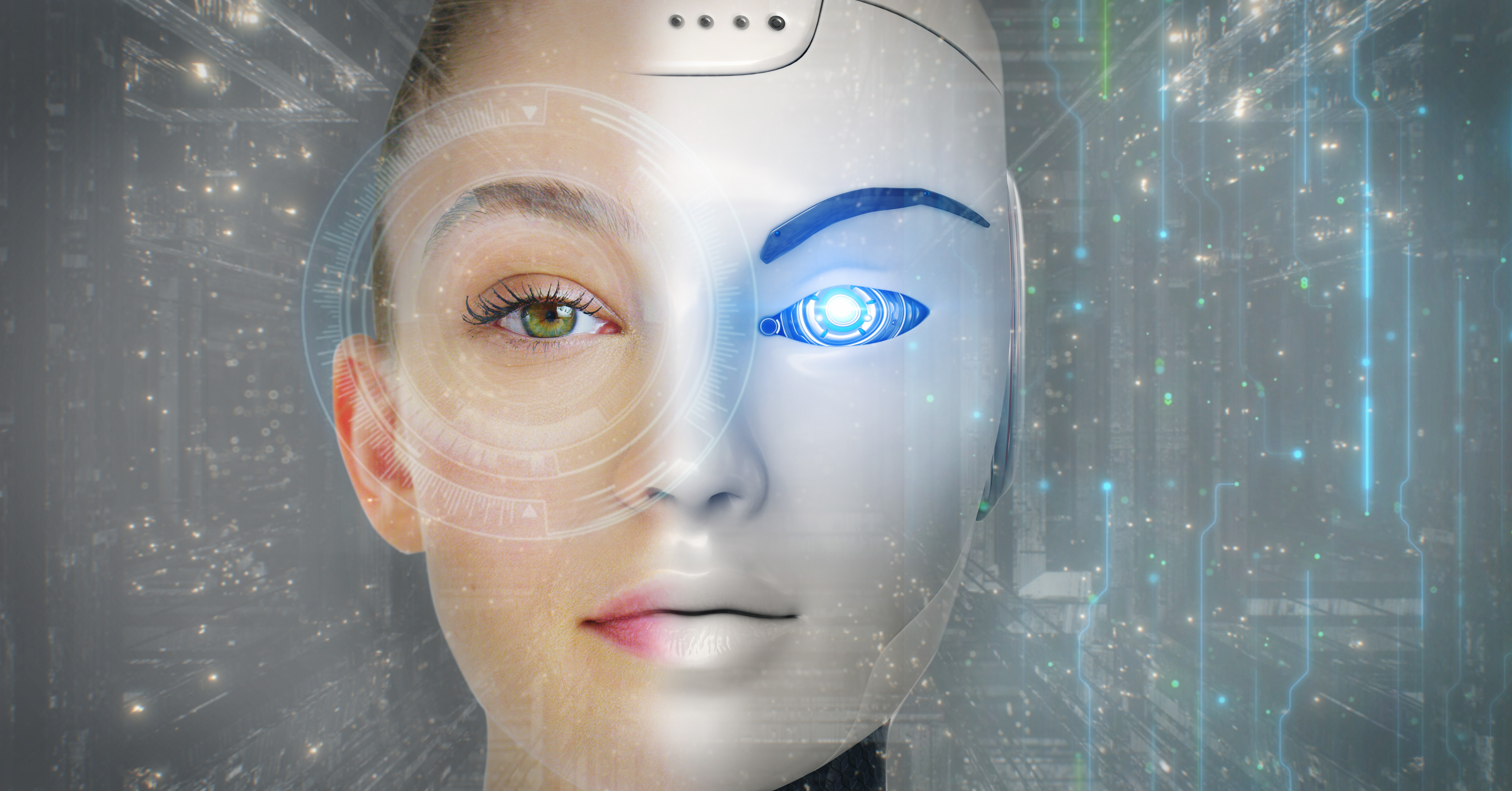


As we have seen in the previous article, when we use our bodies in ways that they are not designed for, bad things can happen. Non-reproductive sexual practices can damage the body in a variety of ways, ranging from STDs to hepatitis to cancers to fecal and urinary incontinence. Our bodies are not infinitely malleable, and whatever our desires for them might be, using the parts of our body contrary to their purposes can cause health problems.
But what if our bodies are not operating correctly to begin with? What if we are missing limbs or are blind or deaf or have lost the use of one part of our body? What do we do then?
The answer is obvious: we use whatever technologies or medicines that we can devise to overcome the problem. Tremendous advances in prosthetic technologies, cochlear implants, transplants, surgical reattachments of severed body parts, and the like have enabled people to live normal lives and even to excel in ways that would have been unthinkable just a few decades ago.
Gene Therapies
That much is uncontroversial. Things get more complicated when we are dealing with genetic issues, however, because of the critical importance of our DNA to our identity. On a biological level, it is arguably the fundamental element that distinguishes human bodies from animal bodies. It also makes each of us physically unique (aside from identical twins). Our genetic code is thus a critical element in defining us as human beings and as individuals, and thus attempts to manipulate it raise important ethical and worldview questions.
Biotechnology is developing at an incredibly rapid rate, so we need to think these questions through very carefully. The place we need to begin is with the distinction between Somatic Cell Gene Therapy (SCGT) and Germline Gene Therapy (GGT). The former, in current technologies, seeks to cure disorders caused by a single gene such as hemophilia or cystic fibrosis localized to a part of a person’s body. SCGT does not change all the cells in a person’s body, only those necessary to correct the disorder. This is relatively uncontroversial, at least in its current form.
In contrast, Germline Gene Therapy modifies sperm and egg cells, thereby changing permanently the genetic makeup of the entire organism. Unlike Somatic Gene Therapy, the changes introduced by GGT are passed down to all of the modified organism’s descendants. This raises serious ethical questions and as a result has been banned in humans by Australia, Canada, Germany, the Netherlands, Switzerland, and Israel. This is due in no small part to the unknown effect it might have on future generations, who would thus be rendered part of a human experiment without being able to give consent.
And yet … if we could use gene-editing technologies to eliminate Sickle Cell Disease or Tay-Sachs or other terrible genetic diseases in cases where we know parents are carriers who could pass them on to their children, some argue that this would be a positive benefit and that the transmission of the corrected gene through the person’s descendants would actually be a benefit, whatever the risks involved.
The problem is, we do not know all the things that genes do, and “correcting” a gene for one problem might create enormous problems elsewhere, if not in this generation than some generations down the line. This is why it has been banned in several countries—we don’t know enough to properly assess the risks, making it unethical to do the experiment.

If an able-bodied person wanted these kinds of prosthetics, should we allow it? There are already “trans-abled” persons who claim to have handicaps they do not and insist on surgical intervention to make them conform to their self-conception. Why not allow people to merge with machines like a disabled person with powered prosthetics? Is there anything ethically wrong with creating the Six Million Dollar Man or a cyborg?
Pre-Implantation Genetic Diagnosis
As an alternative, we could use Pre-Implantation Genetic Diagnosis (PGD) to avoid transmission of the defective genes. PGD is used to analyze the genome of babies produced through in vitro fertilization to determine whether the embryo has the genes for the disease. If not, the embryo can be implanted; if so, she or he is discarded. In effect, the parents and technicians decide the embryo is better off never being born than being born with the disease. In other words, the approach does not cure the diseases; it eliminates children with them.
Other uses of PGD illustrate a fundamental problem with biotechnology. While it can be used to cure diseases, it can also be used for other purposes, such as determining the sex of children so parents can have the child they want—usually a son. Parents in the deaf community have used it to ensure that their child is deaf as well, and parents with dwarfism have done similarly.
And taking the next step, even without genetic technology, the use of sperm bank and in vitro fertilization can enable women to choose the characteristics they want in the father of their baby, including things such as height, hair color, and education level.
Babies thus become a consumer commodity, and like all consumer commodities we insist on our right to choose what we want. And in so doing, we impose our will on all future generations coming from our preferences. This devalues human life and leads directly to a War on the Weak that reduces and ultimately rejects the value of the mentally or physically handicapped.
In ancient Greece and Rome, imperfect babies were “discarded”—thrown into a river or down a well, flushed into the sewers, or left to die on a hillside—in the name of eugenics. Now, in a hideous merging of utilitarian ethics and consumerism, we do the same with our embryos, not to “strengthen the race” but to give us the designer baby we want.
Somatic Gene Therapy Issues
There are similar issues surrounding the largely uncontroversial field of Somatic Gene Therapy. To take a simple example, I am red-green colorblind, a sex-linked trait I got from my mother involving a defect on the X chromosome. It’s a relatively minor problem, and no one to my knowledge is working on Somatic Gene Therapy to fix it. But suppose someone was. Suppose it was possible to introduce genetic material into my eyes that would build the appropriate cones for color vision that I lack. That would be a good thing—it would be repairing something that isn’t working correctly.
But take it to the next step. The same technology that can heal can also enhance. Suppose I am a Special Operations soldier. We could use the same technology to introduce cones that would respond to infrared or ultraviolet light, enabling me to see in the dark. Wouldn’t that be a good thing?
Or suppose you could introduce genes to enhance memory and cognition, or to enhance strength and coordination or stamina—in effect, creating a Captain America type super soldier (or super scholar or super athlete). Wouldn’t that be a good thing?
Or take prosthetics. We can currently provide prosthetic devices that enable amputees to function on a more normal level; we are even working on powered exoskeletons to restore mobility to people with spinal cord injuries. (We are also working on Iron Man-like military exoskeletons to enhance physical performance and to provide full-body ballistic protection.) It seems inevitable that soon we will have powered prosthetics to further improve amputee abilities, perhaps allowing them more raw strength in the prosthetic limbs than an able-bodied person has.
If an able-bodied person wanted these kinds of prosthetics, should we allow it? There are already “trans-abled” persons who claim to have handicaps they do not and insist on surgical intervention to make them conform to their self-conception. Why not allow people to merge with machines like a disabled person with powered prosthetics? Is there anything ethically wrong with creating the Six Million Dollar Man or a cyborg?

If there is no fixed human nature, if we are infinitely malleable, if we have the right to choose who or what we are, none of these possibilities raise any ethical issues. Our personal perception of our identity is all that matters, regardless of physical facts, and we have an unalienable right to force physical reality to conform to our self-image and our desires. We are, in short, in a technological form of neo-Gnosticism.
Techno-Gnosticism
If there is no fixed human nature, if we are infinitely malleable, if we have the right to choose who or what we are, none of these possibilities raise any ethical issues. Our personal perception of our identity is all that matters, regardless of physical facts, and we have an unalienable right to force physical reality to conform to our self-image and our desires. We are, in short, in a technological form of neo-Gnosticism.
All these examples, many of which seem like bad science fiction, have been seriously proposed by thinkers in our world. They all are various forms of Transhumanism, a worldview which argues that human beings should take charge of our own evolution and merge with machines. Many of the most important Transhumanists aren’t as interested in the body as they are in merging our consciousness with computers—an even more extreme techno-Gnosticism. We will take a more detailed look at Transhumanism and its worldview implications in the next article.
Glenn Sunshine, PhD, is a Senior Fellow with the Colson Center for Christian Worldview and professor of history at Central Connecticut State University.














